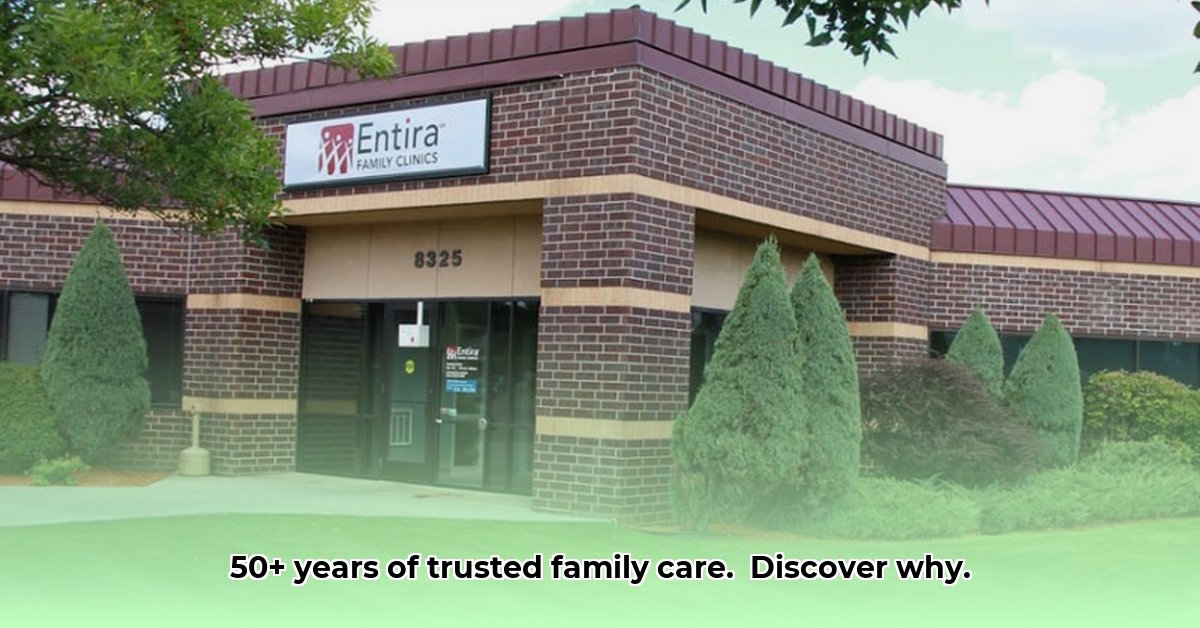
Entira Family Clinic Shoreview: A Legacy of Community Healthcare
Entira Family Clinic Shoreview has served the East Metro area for over 50 years, establishing itself as a cornerstone of community healthcare. This case study examines the clinic's strengths, identifies areas for potential improvement, and proposes actionable strategies for continued success. The analysis considers the clinic's history, services, and its position within the evolving healthcare landscape. How can a clinic with such a long history ensure its relevance and continued impact on the community?
Clinic Profile: Services and Accessibility
Entira Family Clinic Shoreview offers comprehensive primary care services, catering to patients of all ages. Their services include preventative care, management of chronic conditions, and likely other specialized services (the specific details require further investigation). The clinic operates weekdays from 8 am to 5 pm. A team of thirteen physicians provides care, encompassing family medicine, internal medicine, pediatrics, and potentially other specialties. The precise number of physicians within each specialty is unavailable, limiting a comprehensive assessment of service depth. However, the clinic's acceptance of Medicare and Medicaid ensures broad accessibility, regardless of a patient's financial situation. The clinic's physician-owned structure suggests a patient-centric approach, prioritizing quality care over profit maximization.
Strengths and Opportunities for Growth
Entira Family Clinics Shoreview's strengths are firmly rooted in its history and community engagement.
- Established Community Presence: 50+ years of service demonstrates enduring community trust and loyalty. This long-standing relationship with the community provides a significant advantage.
- Comprehensive Service Range: The clinic's commitment to providing primary care for all ages demonstrates breadth of service.
- Physician Ownership: This model often results in a greater focus on patient care and community needs.
- Accessibility: Acceptance of Medicare and Medicaid expands access to care for a broader segment of the population.
However, opportunities exist to further enhance the clinic's performance and future viability.
- Limited Patient Outcome Data: The lack of publicly available data on patient outcomes (e.g., patient satisfaction scores, readmission rates) hinders a comprehensive evaluation of care effectiveness and identification of areas for improvement. How can the clinic measure its true impact?
- Scalability and Future Preparedness: A clear strategic plan addressing the integration of telehealth, value-based care models, and other evolving healthcare trends is needed to ensure long-term sustainability. How will Entira adapt to the evolving landscape?
- Granular Specialty Coverage Detail: A detailed breakdown of physician specialties would provide greater transparency and better inform patient choice and clinic resource allocation. How can the clinic better communicate its capabilities?
Analysis & Interpretation: Current State and Future Potential
Entira Family Clinic Shoreview enjoys a strong foundation built upon its long history and commitment to community care. The physician-owned structure fosters a patient-centric approach. However, the absence of detailed data on patient outcomes presents a significant challenge. Proactive steps must be taken to gather and analyze this data to optimize care and improve patient satisfaction. Further, a comprehensive strategic plan to address the evolving healthcare environment – incorporating telehealth, value-based care, and technological advancements – is crucial for long-term sustainability. Finally, increased transparency regarding physician specialty coverage strengthens patient choice and allows for better assessment of the clinic's capabilities.
Community Impact
Entira's long-standing presence underscores its significant contribution to the Shoreview community. However, quantifying this impact through patient outcome data would be extremely valuable.
Financial Sustainability
Physician ownership suggests a focus on quality; however, a robust strategic plan is necessary to navigate the complexities of the changing healthcare reimbursement landscape.
Future Directions
Embracing telehealth, expanding data-driven decision making, and developing a clear strategic plan are critical for future viability.
Recommendations: Actionable Steps for Improvement
Implementing the following recommendations will enhance Entira Family Clinic's capabilities and ensure its continued success.
- Implement Patient Satisfaction Surveys: Conduct regular surveys to gather feedback, identify areas for improvement and guide future initiatives. The goal is to achieve a 90% patient satisfaction rate within one year.
- Analyze Operational Efficiency: Conduct a thorough review of workflows to identify bottlenecks and improve efficiency. Aim for a 15% reduction in patient wait times within six months.
- Integrate Telehealth Services: Invest in technology and training to provide remote access to care. Target 20% of patient visits to be conducted via telehealth within two years.
- Develop a Detailed Strategic Plan: Create a five-year plan to address evolving healthcare trends, including telehealth, value-based care, and technological advancements. This should include regular reviews and updates.
- Publish Granular Specialty Data: Publicly release the number of physicians in each specialty to enhance transparency.
Conclusion: A Foundation for Continued Success
Entira Family Clinic Shoreview has established a strong foundation built on a 50+ year legacy of providing quality care. Addressing the identified opportunities and implementing the recommended strategies will not only enhance patient satisfaction and operational efficiency but also secure the clinic's position as a trusted healthcare provider in the Shoreview community for many years to come. The clinic's future success hinges on its ability to embrace change, leverage data-driven insights, and proactively adapt to an evolving healthcare landscape.
Sources
- Entira Family Clinics Website: https://entirafamilyclinics.com/primary-care-clinics/shoreview/